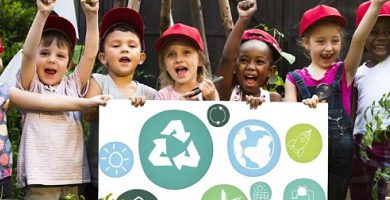What are microplastics?
We explain what microplastics are, where they are, their causes and consequences. In addition, what are the possible solutions.
-
What are microplastics?
Microplastics are tiny fragments of plastic from different origins. Since they measure less than 5 millimeters, they are stored in the environment and constitute an important source of pollution today. Its presence has been detected in animals, food and even the human intestine.
Since 1950, when the production of plastics began on a massive scale, 8,300 million metric tons of this material have been manufactured (that is, the equivalent of 1,000 million elephants or 80 million blue whales). Only 9% of them are recycled . The rest will give the environment, where it begins a very long process of decomposition, since it does not biodegrade.
However, it does disintegrate due to the action of climatic and biological agents. Thus, plastics release small fragments that different forms of life confuse with food , storing it in their organisms that fail to digest them, and thus incorporating it into their respective trophic chains .
The effects of microplastics in the organism of living beings are being studied. What is known is that this type of particles foreign to the usual organic matter of their tissues can neither be digested nor assimilated, but can be expelled by natural routes at best. It is increasingly common to find animals killed by poisoning with plastics of different sizes.
In fact, the presence of microplastics has been verified in places as diverse as Arctic snow, sea water , the lower part of the atmosphere , the interior of commercial water bottles of different brands, the gut of the fish or even in the fecal matter of human beings .
The WHO , in charge of these studies, has warned of the urgency of stopping the production of plastics and give them a more rational use of existing as well as promote the culture of recycling and the responsible consumption.
-
Causes of microplastics
The contamination by microplastic originates human manufacture , as the plastic in its various forms does not exist in nature . In this way, it is possible to classify microplastics depending on their specific origin, in:
- Primary microplastics (between 15 and 31% of the total) . Those man-made for small-sized applications, which are then discarded or lost and will give the environment. These are small parts, plugs, coatings, etc.
- Secondary microplastics (between 69 and 81% of the total) . Those that come from the physical decomposition of larger plastic objects, such as containers, plastic bags, etc., which due to erosion and wear were crushed into tiny fragments, although equally imperishable.
-
Consequences of microplastics
For now, the consequences of contamination by microplastics are unknown , beyond their abundant presence in the most diverse environments and the numbers of animals found with this material housed in their stomachs.
The death by poisoning plastic seems a remote possibility in humans, for now, but it is impossible to determine what the increase in these particles could produce in our bodies: obstructions, unexpected biochemical reactions, abscesses, poisoning, etc.
-
Solutions to microplastics

There are no quick and immediate solutions to this problem , but there are a number of measures that can be put in place to address it, such as:
- Reduction of plastic production . In recent years, new resolutions regarding the use of plastic have led to the tightening of laws that prohibit the use of plastic bags, limit the importation or production of containers of said material, or propose their replacement with biodegradable materials. The worldwide need for an agreement to reduce the production of this material is imposed.
- Promotion of recycling and reuse . Together with the decrease in its use, the recycling of plastic and its reuse are part of the urgent measures to be undertaken to limit the amount of plastic consumed. The containers can be reused, the lids too, the bags too, and what not, can be recycled in other ways.
- Ban on single-use plastics . Disposable items such as packaging, bags, microspheres, cutlery, glasses, sorbets, cotton swabs, etc. they must eventually be replaced by materials that are less harmful to the environment. Countries such as Costa Rica, Kenya, Rwanda, United Kingdom, Canada, New Zealand and the US are already tightening their positions regarding the importation and manufacture of this type of products .





